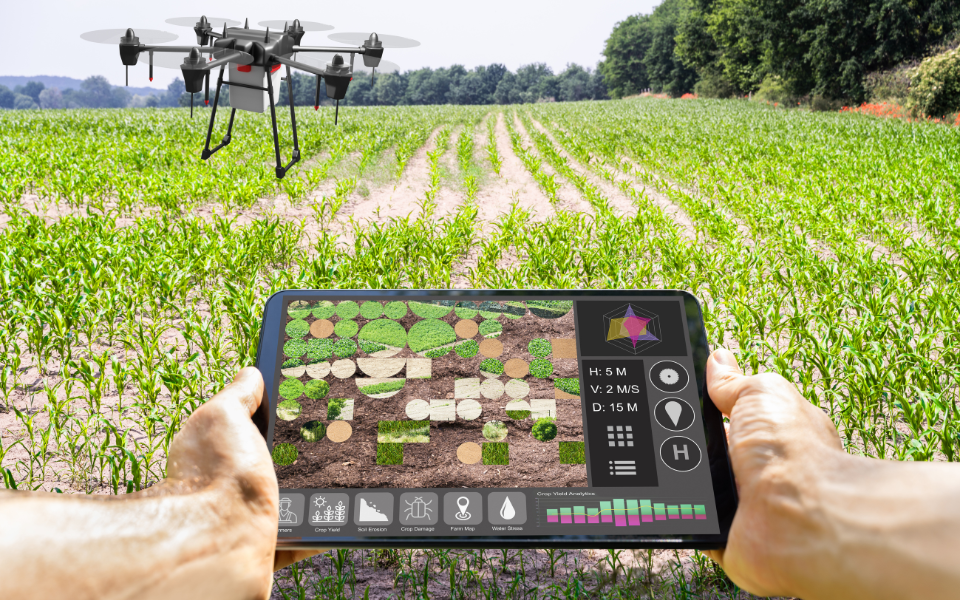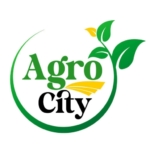Sustainable agricultural methods and smart farming technologies can complement one another to increase food security, reduce environmental impact, and maximize efficiency. In order to improve resource management, crop output, and overall farm productivity, smart farming makes use of technology like the Internet of Things, data analytics, and automation. In contrast, sustainable agriculture emphasizes economically and socially responsible agricultural methods.
How Sustainable Agriculture Is Promoted by Smart Farming:
- Resource Optimization: By enabling more effective use of water, fertilizer, and pesticides, smart farming technologies such as precision irrigation and fertilization help to minimize waste and contamination in the environment.
- Data-Driven Decision Making: Farmers may make better resource allocation and lower input costs by using real-time data analysis from sensors and other devices to inform their decisions about planting, harvesting, and pest control.
- Increased Crop Yield and Quality: Smart farming can result in higher yields and better crop quality by choosing appropriate crop varieties, monitoring crop health, and optimizing growing conditions.
- Diminished Environmental Impact: By encouraging more effective irrigation methods, minimizing the use of pesticides and fertilizers, and optimizing the use of machinery, smart farming can lower greenhouse gas emissions.
Improved Food Security: Smart farming can help to improve food security and stability by raising crop yields and decreasing food waste.

A solution-focused idea, smart agriculture gives the farming industry access to cutting-edge technology that uses big data, cloud computing, and the Internet of Things (IoT) for activities like recognition, automation, and exploration. Smart agriculture could be viewed as a way to understand the necessary conditions and the changes in the existing climate that alter sensor and actuator activity. Utilizing tools and programming advancements like satellites for photography and location, control systems, mechanical technologies, information storage and analysis, and conveyance sensor hubs is crucial.
It was essential for farmers to be in the fields at all times, monitoring the land and harvest conditions in traditional agriculture. If the farms or lands are not too big, this could be doable. However, the process became extremely challenging and tiresome for the farmers to constantly monitor everything due to the vast and expansive areas. Micro farming, which involves cultivating multiple remote plots of land for different harvests and necessitates different conditions and soil and water control, makes it more difficult for farmers to observe and monitor. However, farmers may handle problems like insects or pests by using smart technologies to remotely monitor their fields or lands.
Adjusting soil conditions with the use of suitable sensors and automated methods, and appropriately watering the necessary areas.
Using mobile phones, devices, and other equipment, smart agriculture aims to fix a field or piece of land by creating limits that include the soil’s moisture content, compost or material substance, environment, climate, and the creation of the required yields. As a result, data that can be obtained from smallholder farmers gets digitized. Numerous specialized businesses, including input suppliers, agricultural processors, and monetary or financial suppliers, can utilize the data to build farmer profiles that can be improved over time.
With the help of the data and service providers, farmers may effectively reduce expenses, improve returns, and create thriving farms. Today’s methods, which include weather forecasting and monitoring potential risks and diseases, save farmers time and offer reliable geographical information that can be helpful in making the right decisions when hazards arise.
FAQ.
What is sustainable agriculture, in your opinion?
The goal of sustainable agriculture is to maximize the use of nonrenewable resources while preserving the environment and promoting the growth of natural resources.
What is the smart farming concept?
Utilizing the new technologies that have emerged in agricultural and cattle production since the start of the Fourth Industrial Revolution to maximize resource utilization and reduce environmental effects is known as “smart farming.”
Smart and sustainable agriculture: what is it?
Sustainable agricultural methods: Intelligent systems cut down on pesticides, save water, and lessen carbon emissions. Early identification of diseases and pests: AI systems can spot dangers before they become widespread, reducing damage and enhancing crop resilience.
CONCLUSION.
By increasing productivity, efficiency, and environmental impact, smart farming uses technology to optimize agricultural operations and supports the larger objectives of sustainable agriculture. This involves reducing resource waste, raising crop yields, and encouraging responsible land management through the use of data analytics, automation, and precision farming techniques.
